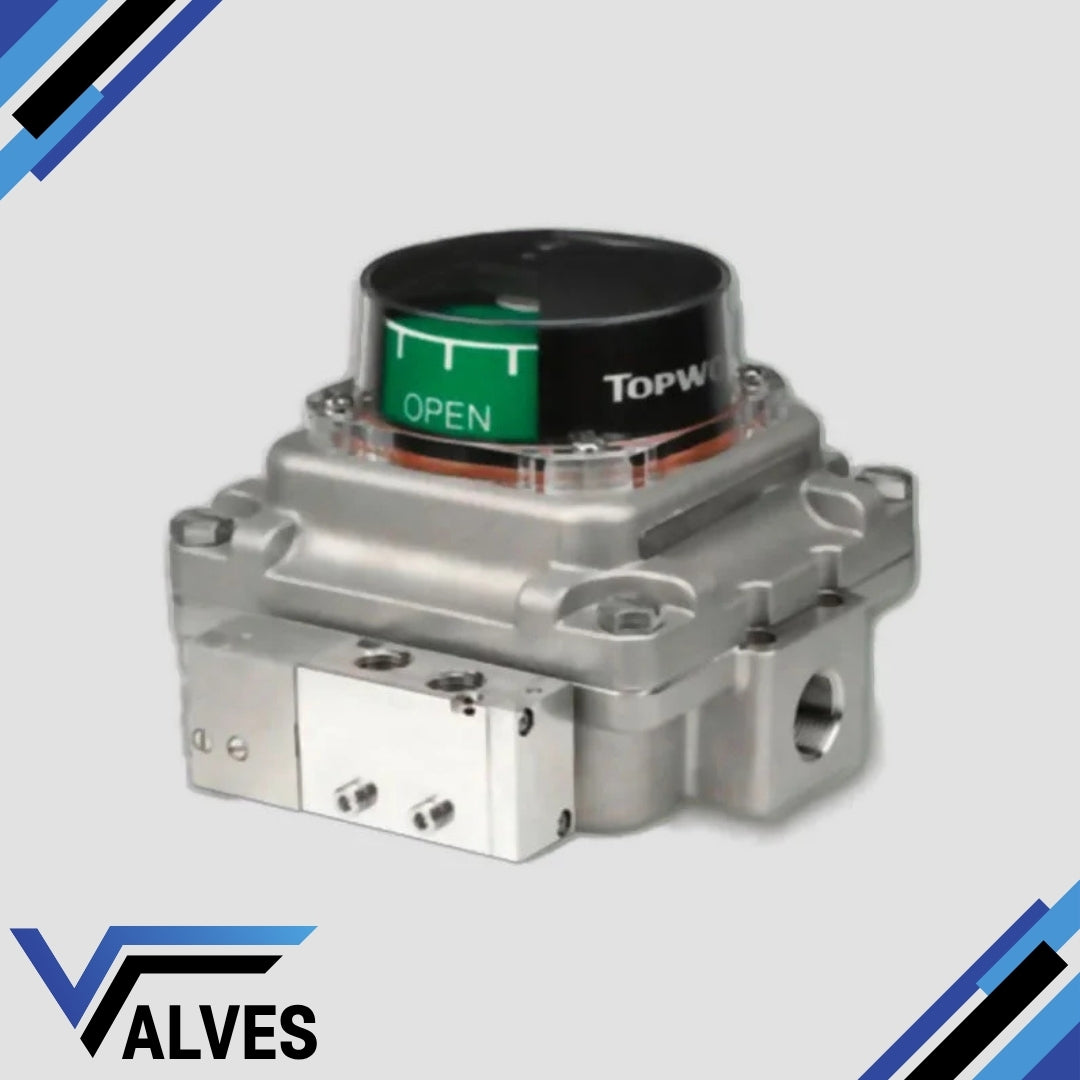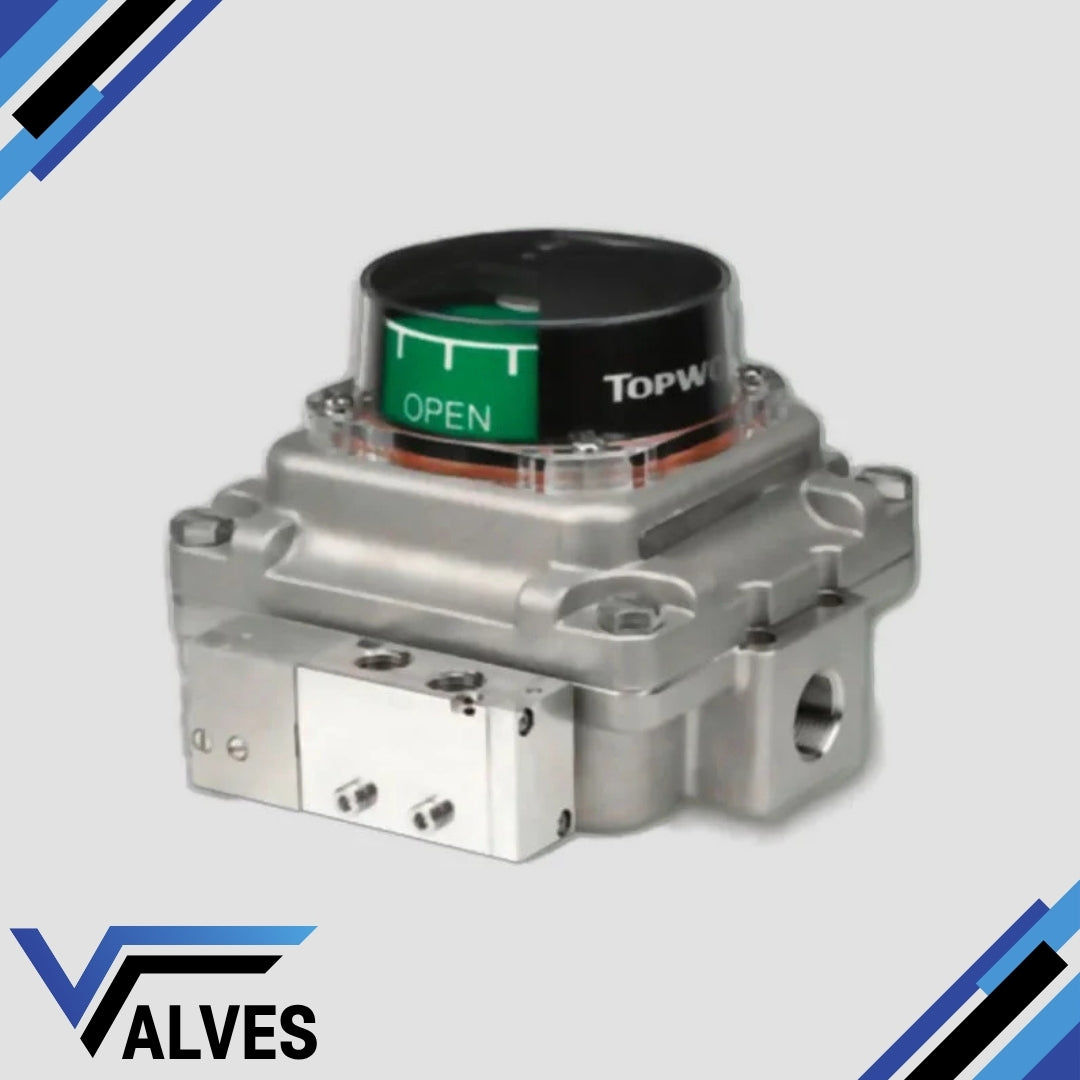Topworx Switchboxes
TopWorx Limit Switch Box TXS-0XWGNJM Valve Monitor
TopWorx Limit Switch Box TXS-0XWGNJM Valve Monitor
Couldn't load pickup availability
The TXS-0XWGNJM Valve Monitor provides precise valve position feedback, utilising GO Switch technology, which is renowned for its durability and no-power consumption. This ensures reliable performance even in extreme conditions, withstanding vibrations, temperature fluctuations, and corrosive environments.
Key Features:![]()
- GO Switch Technology: Provides dry contact with no voltage drop or leakage current, ensuring low power consumption and high reliability.
- Explosion-proof Design: Certified for use in hazardous areas, with Class I, Division 1 and ATEX Zone 1 certifications.
- Rugged Construction: Built to withstand harsh conditions with a wide operating temperature range of -40°C to 85°C, and is rated IP67 for dust and water ingress protection.
- Compact Design: The enclosure is compact, yet provides full functionality with various options for integrated solenoid valves and bus networks.
- Ease of Use: Features easy-to-set visual indicators, making it simple to monitor valve positions at a glance.
Additional Information:
The TXS-0XWGNJM model is engineered for intrinsically safe applications, where a current-limiting barrier is required. Its hermetically sealed switches ensure longevity and performance in hazardous areas. It also offers flexibility with optional solenoid valves and multiple switch configurations to match specific operational needs. Moreover, its 4-20 mA loop circuit allows for seamless integration into digital control systems, providing real-time feedback and reducing maintenance time.
Share

FAQ's
What is the difference between a valve and an actuator?
What types of actuators are available?
The main types of actuators are:
Pneumatic actuators – use compressed air for fast, reliable operation.
Electric actuators – use electrical power for precise control.
Hydraulic actuators – use fluid pressure for high-torque applications.
Each type offers unique advantages depending on the environment, media, and system control needs.
How do I choose the right actuator for my valve?
To select the correct actuator, consider:
Valve type and torque requirement
Power source available (air, electric, or hydraulic)
Operating environment (temperature, humidity, hazardous area)
Control signal type (on/off or modulating)
Matching actuator torque and compatibility with the valve’s ISO mounting ensures reliable performance.
What are the main types of valves used in automation?
The most common valves in automated systems include:
Ball valves – for tight shutoff and quick operation.
Butterfly valves – for larger flow control with compact design.
Globe valves – for precise throttling and flow regulation.
Check valves – to prevent backflow.
Gate valves – for full bore flow isolation.
What’s the difference between a double-acting and spring-return actuator?
Double-acting actuators use air (or power) to both open and close the valve.
Spring-return actuators use air to open (or close) the valve, and a built-in spring to automatically return it to a safe position when power or air is lost — ideal for fail-safe operation.
How often should valves and actuators be serviced?
Regular maintenance intervals depend on operating conditions, but a good rule of thumb is to inspect every 6–12 months.
This includes checking for leaks, lubrication, seal wear, and actuator responsiveness to prevent unexpected downtime.

